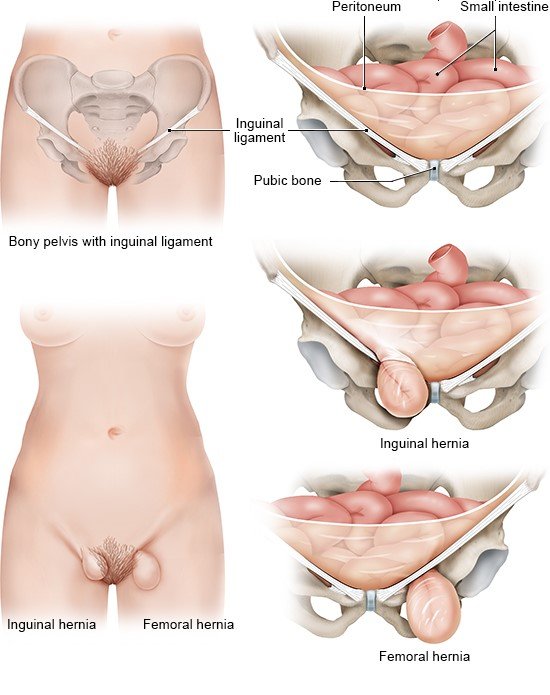Berger D. Evidenzbasierte Behandlung der Leistenhernie des Erwachsenen [Evidence-Based Hernia Treatment in Adults]. Dtsch Arztebl Int 2016; 113(9): 150-158.
Fitzgibbons RJ, Forse RA. Clinical practice. Groin hernias in adults. N Engl J Med 2015; 372(8): 756-763.
HerniaSurge Group. International guidelines for groin hernia management. Hernia 2018; 22(1): 1-165.
Köckerling F, Koch A, Lorenz R. Groin Hernias in Women – A Review of the Literature. Front Surg 2019; 6: 4.
Lockhart K, Dunn D, Teo S et al. Mesh versus non-mesh for inguinal and femoral hernia repair. Cochrane Database Syst Rev 2018; (9): CD011517.
Mathes T, Prediger B, Walgenbach M et al. Mesh fixation techniques in primary ventral or incisional hernia repair. Cochrane Database Syst Rev 2021; (5): CD011563.
Svendsen SW, Frost P, Vad MV et al. Risk and prognosis of inguinal hernia in relation to occupational mechanical exposures – a systematic review of the epidemiologic evidence. Scand J Work Environ Health 2013; 39(1): 5-26.
Treadwell J, Tipton K, Oyesanmi O et al. Surgical options for inguinal hernia: comparative effectiveness review (AHRQ Comparative Effectiveness Reviews; No. 70). 2012.
Wei FX, Zhang YC, Han W et al. Transabdominal Preperitoneal (TAPP) Versus Totally Extraperitoneal (TEP) for Laparoscopic Hernia Repair: A Meta-Analysis. Surg Laparosc Endosc Percutan Tech 2015; 25(5): 375-383.
Whalen HR, Kidd GA, O'Dwyer PJ. Femoral hernias. BMJ 2011; 343: d7668.
IQWiG health information is written with the aim of helping people understand the advantages and disadvantages of the main treatment options and health care services.
Because IQWiG is a German institute, some of the information provided here is specific to the German health care system. The suitability of any of the described options in an individual case can be determined by talking to a doctor. informedhealth.org can provide support for talks with doctors and other medical professionals, but cannot replace them. We do not offer individual consultations.
Our information is based on the results of good-quality studies. It is written by a team of health care professionals, scientists and editors, and reviewed by external experts. You can find a detailed description of how our health information is produced and updated in our methods.


